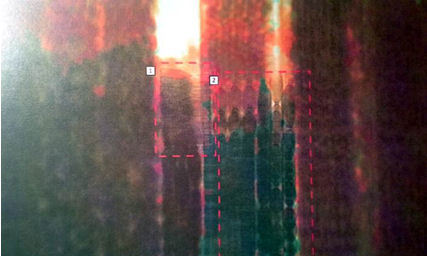Luxembourg is a landlocked country, bordering Belgium, France and Germany. L’Administration des Douanes & Accises (Customs & Excise) is the Luxembourg governmental agency in charge of customs clearance of imports and exports, mostly from Europe, and the regulation of all customs activities within the territory.
Its responsibilities include mitigating threats and ensuring that illegal/dangerous goods such as explosives, narcotics, and weapons are not let into the country. International smuggling of cigarettes is a current concern as it leads to extensive tax evasion. This loss of tax revenue causes significant financial damage to the national budget.
Historically, Luxembourg Customs utilised traditional low-energy X-ray systems from Smiths Detection which were installed at the country’s International Findel Airport. However, these systems were not designed to scan vehicles and their contents, nor offer the level of steel penetration the customs team required to screen densely packed loads.
As a result, Douanes & Accises decided to invest in a non-intrusive inspection solution to execute random checks on vehicles near to the country’s borders.
To prevent criminals from discovering and evading checks, Customs officials established checkpoints within concealed areas and patrolled motorways on motorbikes. Suspect vehicles were diverted to the checkpoints. Mobile checkpoints were active at each location for no more than an hour to ensure drivers and distributors could not communicate or change direction to avoid inspections.
It was also a requirement to relocate the system to other territories such as Belgium to aid their local scanning operations and share best practices.
The concealed checkpoints are now equipped with a powerful, high energy Heimann CargoVision Mobile Truck (HCVM T) mobile vehicle inspection system, which includes a comfortable air-conditioned operator’s cabin. This trailer based solution was a perfect fit for Luxembourg Customs which was able to realize major advantages by employing a more effective inspection team. This is achieved by driving the vehicle to the set location where the cab is separated from the truck platform. The controls are all housed in the trailer section, freeing up the driver to operate the trailer scanner by remote control and join other officials in performing various essential duties.
The HCVM T was also chosen for its superior steel penetration and high-resolution X-ray images. This provided the ability to better screen dense loads and accurately identify concealed items. Supported by the integrated viZual TM material discrimination which differentiates organic from inorganic materials through colour, the feature could identify and pinpoint abnormalities within vehicle contents. Automatic Threat / Target Recognition (ATR) software was also incorporated in the system to benefit operators by highlighting specific areas where particular threats or targets are located. Combined, these features increased operator efficiency and reduced the need for manual inspections.
Shortly after the implementation of the HCVM T, it seized 12 million illegal cigarettes. Red flags surfaced when the cargo manifest paperwork was not in order, and both driver and co-driver could not confirm contents in the vehicle. The integrated ATR software on the HCVM T identified that there were undeclared cigarettes. This led to a manual inspection which revealed the concealed cargo which was intended to be delivered to Luxembourg and France.
Mr Guy Loesch, Head of Security at Luxembourg Customs, said: “Consumer demand for lower-priced cigarettes, and higher prices in countries such as the UK made smuggling of cigarettes across our borders attractive to fraudsters who pay little to no tax on the shipments”
The distributors were fined €10M, five times the tax which would have been levied on the cargo.
In another major seizure, the integrated viZual material discrimination software clearly showed bottles of liquid hidden in a mixed consignment which had not been declared on the manifest [see Fig 1]. This prompted a manual inspection which confirmed 60 cases had been concealed, resulting in a haul of 630 litres of champagne.

Luxembourg Customs increased their detection capabilities further by selecting other specialised Smiths Detection sensors housed on board the HCVM T for rapid deployment at checkpoints. These include the RadSeeker TM handheld radiation detector, IONSCAN 500DT TM trace explosives detector, and HazMatID TM chemical identifier.
The HazMatID TM is used to identify explosives, narcotics, toxic substances, and precursor chemicals used to manufacture improved explosive devices (IEDs). In 99% of the cases, the HazMatID can analyse substances quickly and easily, avoiding costly and often lengthy tests by independent laboratories. It has also been customised by the Luxembourg Police with additional detection libraries to reduce the number of false alarms.

Proven seizures enable customs authorities to justify investing in these essential systems. Luxembourg Customs are now armed to monitor tax evasion schemes and safeguard their borders for years to come. The sharing of data, information and best practices will help in the global fight against criminal activities and deter fraudsters in the future.